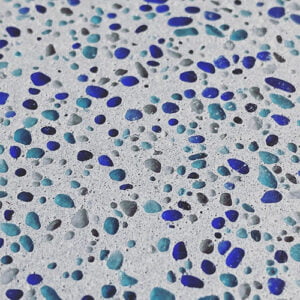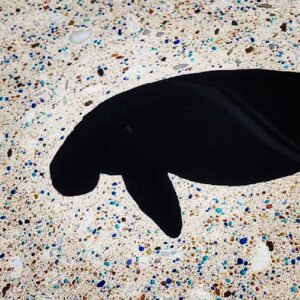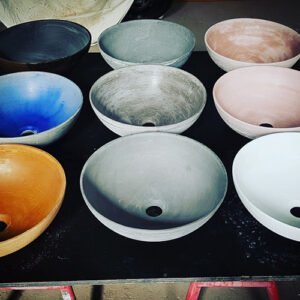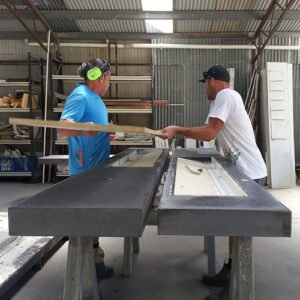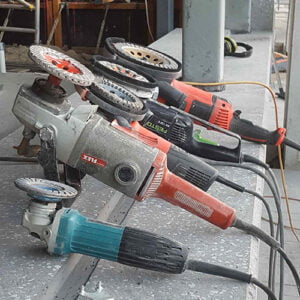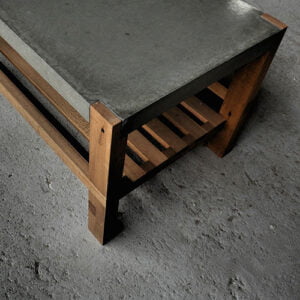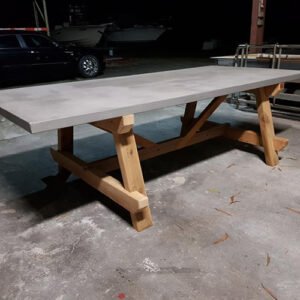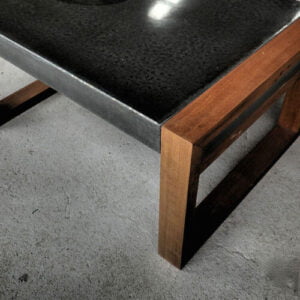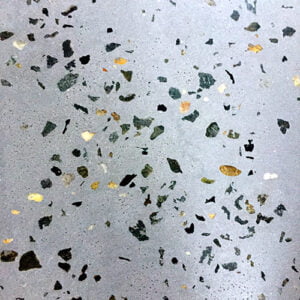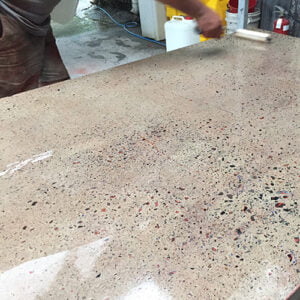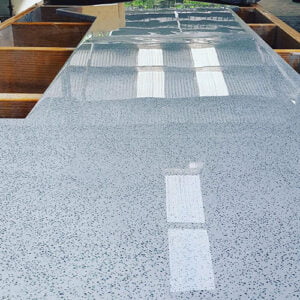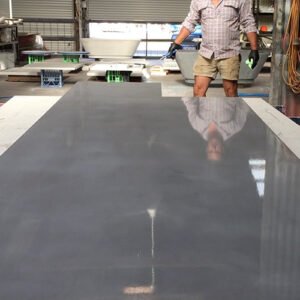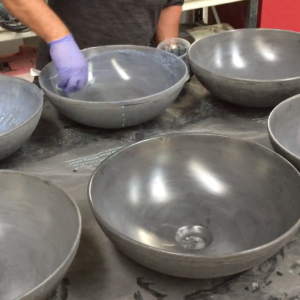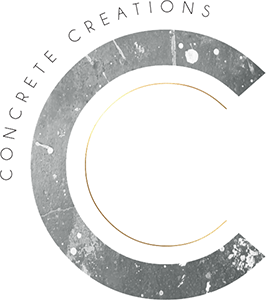Glass Fibre Reinforced Concrete, or GFRC, allows us to create products with enhanced structural performance as well as aesthetic appeal. It is a medium that really opens up possibilities for us to use concrete in creative ways!
GFRC is a balanced formulation incorporating cement, fine sand, polymer, water, glass fibres and other admixtures. It is carefully engineered to provide high performance qualities, including high compressive and flexural strength. The mix that we use has been designed in Australian laboratories by a team of chemical engineers.
High flexural strength comes from the matrix of fibres and high polymer content, which reinforce it at both the microscopic and macroscopic levels. This means that products are more resistant to cracking and chipping than those made using conventional concrete. High compressive strength is achieved through high packing density and fewer capillary pores. GFRC can be homogeneously pigmented using high grade UV resistant pigments to achieve a range of colours.


